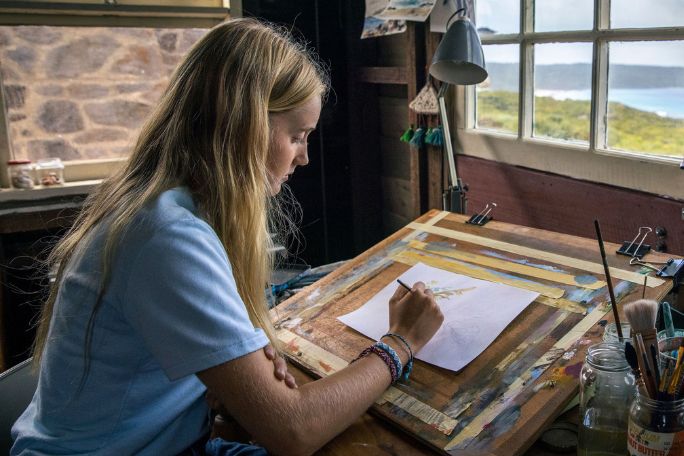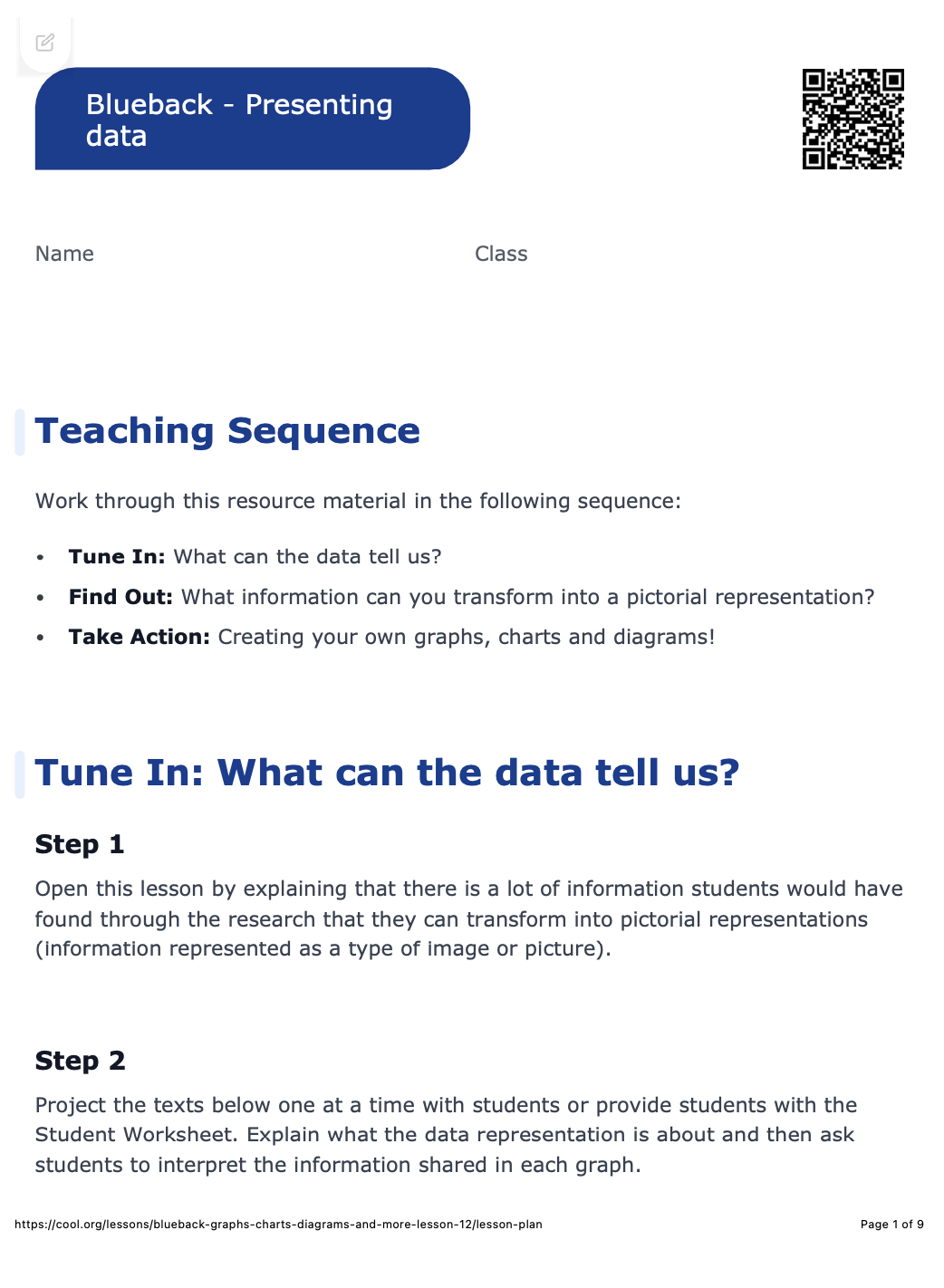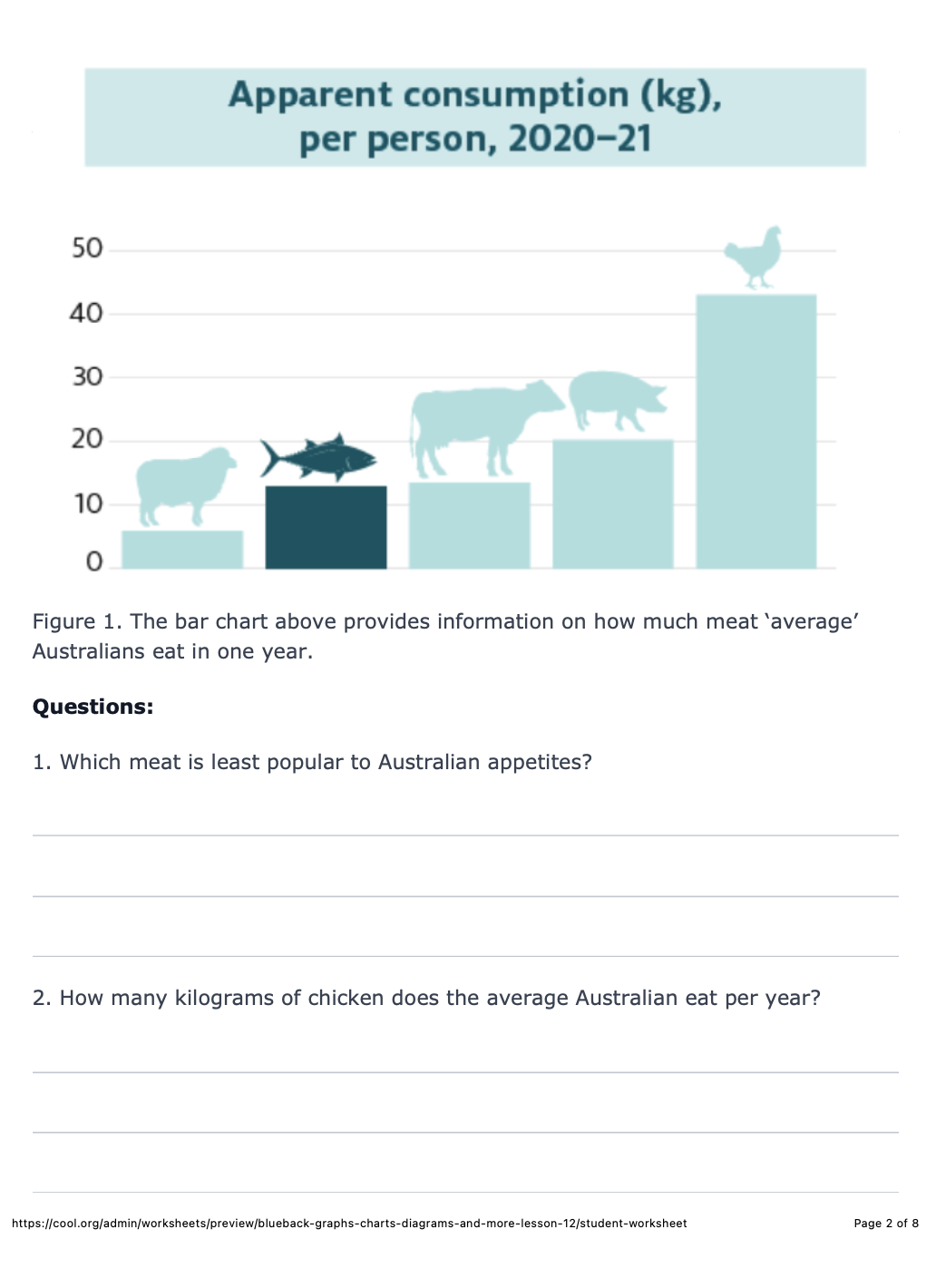Lesson summary
Students will learn how to transform information into graphs and charts. They evaluate different types of basic graphs and charts and learn how to choose which data visualisation is most suitable for the information they have.
Learning intentions:
Students will...
- learn how to identify data that is appropriate to be transformed into a pictorial representation (information represented as an image)
- learn how to determine which pictorial data representation - graphs and charts - are most suitable for particular pieces of information
- learn how to transform written information into a graph or chart.
Success criteria:
Students can...
- identify data that can be transformed into a pictorial representation
- accurately identify which graphs, charts or diagrams would be the best way to represent certain information
- demonstrate their ability to transform written information into a graph or chart.
Lesson guides and printables
Curriculum links
Select your curriculum from the options below.
Lesson details
Curriculum mapping
Australian Curriculum (v9.0) content descriptions:
- Evaluate information and data in a range of formats to identify and describe patterns and trends, or to infer relationships (AC9HS5S03)
- The influence of people, including First Nations Australians and people in other countries, on the characteristics of a place (AC9HS5K04)
Syllabus outcomes: GE3-4, GE3-2
Cross-curriculum priority: Sustainability
Relevant parts of Year 5 achievement standards:
They identify and describe the interconnections between people and the human and environmental characteristics of places, and between components of environments. They locate, collect and organise data and information from a range of sources to answer inquiry questions. They present findings and ideas using geographical terminology in a range of communication forms.
Resources required
- Access to the film Blueback, also available on Clickview
- Access to Google Sheets or Microsoft Excel
- Access to Our World In Data (ourworldindata.org/plastic-pollution)
- Device capable of presenting video and audio to the class
- Student Worksheet
Skills
This lesson is designed to build students’ competencies in the following skills:
- Communication
- Creativity
- Critical thinking
- Digital literacy
Additional info
Level of teacher scaffolding: Medium: Teachers should read this resource and its associated materials before delivering the lesson. There may be concepts covered that require further reading or extra preparation. Some of the activities may need to be planned in context to teachers’ classrooms. This lesson requires students to create data representations in Microsoft Excel or Google Sheets which teachers will need to familiarise themselves with before using these tools with students.
Minderoo Foundation is proud to be the education partner for the film adaption of Tim Winton’s best-selling book, Blueback.
Related professional learning
Teach the Big Picture of Sustainability
Quick summary: Open your students’ minds to how different systems – environmental, social and economic – are connected.



Welcome back!
Don't have an account yet?
Log in with:
Create your free Cool.org account.
Many of our resources are free, with an option to upgrade to Cool+ for premium content.
Already have an account?
Sign up with:
By signing up you accept Cool.org's Terms and Conditions(Opens in new tab) and Privacy Policy(Opens in new tab).